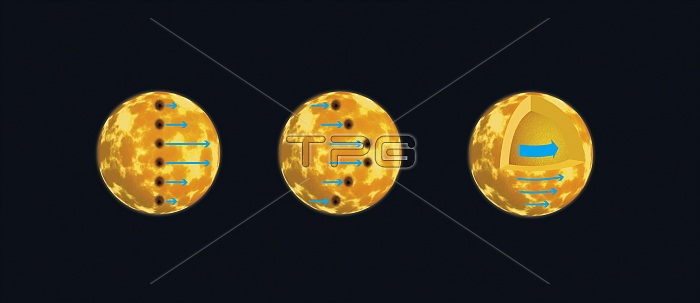
Sunspot rotation, illustration. Sunspots (black dots) are areas of magnetic activity that are cooler than the rest of the Sun's surface. They range in size from hundreds to thousands of kilometres across. Here, they are lined up on a solar meridian at left. Sunspots form where magnetic field lines become twisted and entangled due to a faster speed of rotation (blue lines) at the Sun's equator compared to higher latitudes. This difference in rotation speed spreads out the sunspots (centre), with high-latitude sunspots lagging behind and equatorial sunspots moving ahead. At right, a cutaway view shows the cause of this effect, with the radiative layer of the Sun rotating like a solid object, while the overlying layers only rotate at this speed at the mid-latitude regions.
| px | px | dpi | = | cm | x | cm | = | MB |
Details
Creative#:
TOP25086395
Source:
達志影像
Authorization Type:
RM
Release Information:
須由TPG 完整授權
Model Release:
N/A
Property Release:
N/A
Right to Privacy:
No
Same folder images:

 Loading
Loading